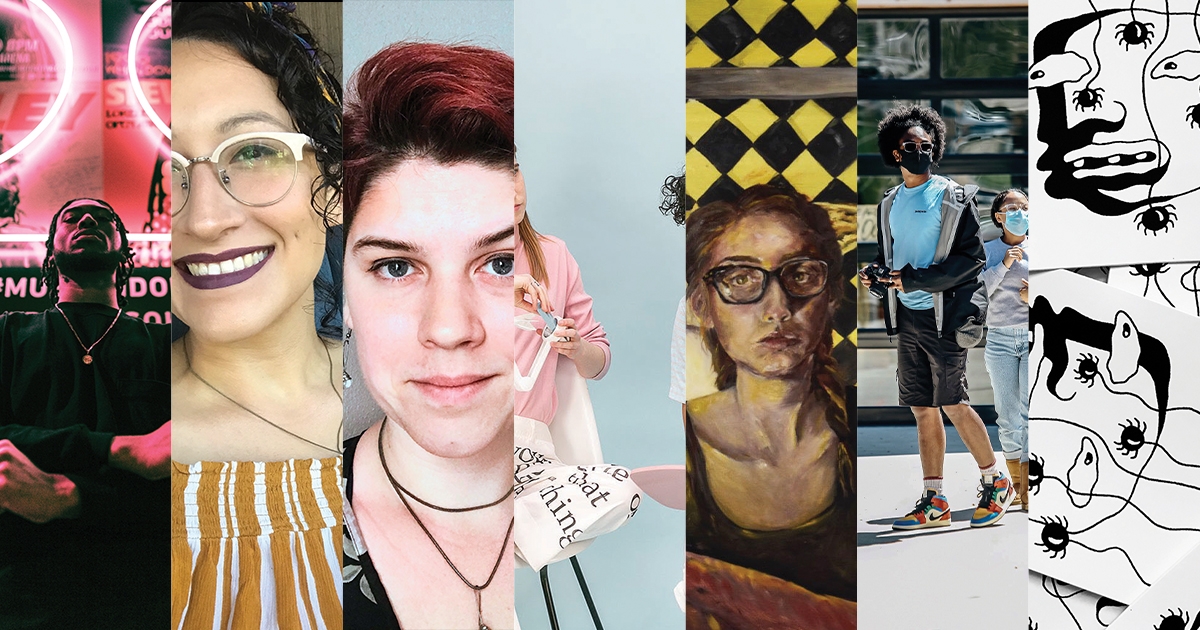Across West Michigan, art abounds, along with the people who make it. Painters, photographers, muralists, illustrators, sewers — they’re all around us, creating beautiful and meaningful work every day. We talked with a few of these local artists about how they got started, what inspires them and what they’re working on.
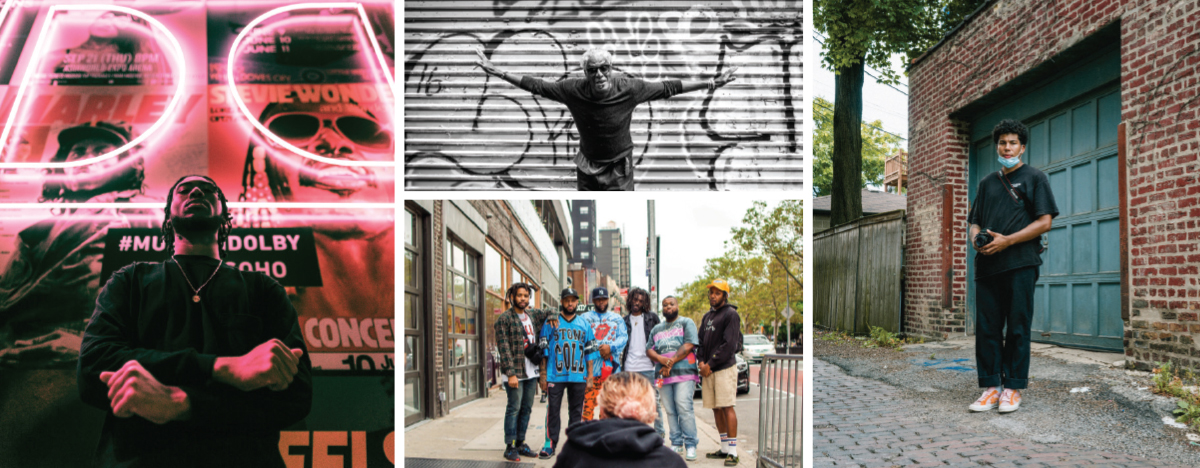
LEONDRO LARA | @lefilmmm on Instagram
Even as a teenager, “I knew I was an art kid.” Born and raised in the 616, Grand Rapids-based photographer Leandro Lara laid down his artistic roots in early high school, where he worked with film and digital photography and digital arts. Today, he’s a portrait and document photographer who specializes in digital, 35mm and medium format film.
Tell us how you discovered photography.
When I was 15, a program in high school called WMCAT first started off doing film photography, and I learned how to do pinhole box photography. Throughout that situation, I went to graphic design, but I didn’t really fall in love with it all that much. My junior year, I went back to digital photography, and that’s when I grew the love and the actual passion of it. I did love the dark room, but it was a lot when I was 15.
Where are you in your journey between digital and film, and what does that mean to you?
I like film because it’s how everything started. The grind, the hustle and the learning curve is very different. It forces you to understand your camera a little bit more and what you want to shoot. It makes you stop and think slower, instead of digital where you can just go from the hip. It’s been an interesting journey. Digital has helped me get to where I want to be. But going back to film makes me push further.
What do you hope viewers feel or receive from your work?
I hope that once they see the work that I put out, they feel like they’re in that situation. I want them to feel like they’re a part of it. I like to show people the environment I was in, and you can feel it just by looking at the photo.
How does being in West Michigan influence your creative process?
It’s pushed me to a point to show that there’s more in West Michigan besides wedding photographers and event photographers. It helps me get to understand other people’s story and goal and journey. It’s helped me to push myself to get out of the normal things.
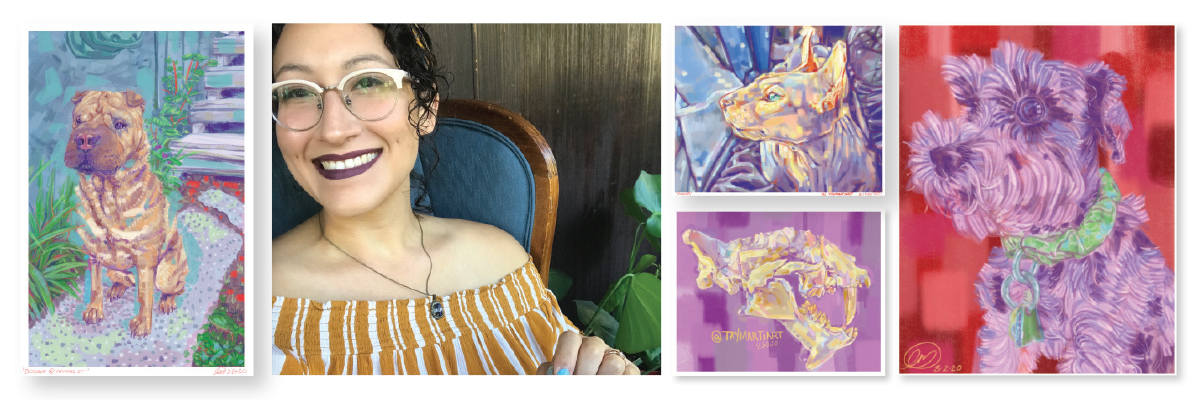
TAYLOR MARTINEZ | @taymartiart on Instagram
For oil painter and comic writer Taylor Martinez, her artistic journey began in the first grade with a school assignment. After briefly quitting in the third grade because she couldn’t draw a horse, Martinez now creates magnificent animal portraits and comics that her younger self would definitely be proud of. Martinez identifies as a biracial queer artist, which shows in her work and the way she engages with the West Michigan creative community.
How do your creative processes differ and overlap between oil painting and comic writing?
It feels like two totally separate pieces of my brain go into these two different directions. The comic is a lot more emotional for me actually, because it deals a lot with toxic relationships, abuse, mental illness and all that stuff. Whereas, I feel like the painting is a lot more like my fun stuff, like animals. It’s always nice to stare at a dog and paint their portrait for a couple hours.
What has changed since you started making art as a child?
I’ve gotten more curious about looking at everyday things and wondering, “How would I interpret that?” I think it makes me appreciate a lot more things, too. Everything is kind of a puzzle — it all depends on how you put it down.
How does your identity as a biracial queer woman influence your work?
Definitely with the comic is where I feel like I get out that kind of struggling with identity, struggling with not really belonging anywhere. Being biracial is so weird because on one side, I have this huge, very vibrant, colorful Hispanic family — very typical. And then on the other side, I literally have grandparents I’ve never met. And I’m gay on top of it, so they’re definitely never going to meet me. I do put a lot of those frustrations into my comic.
Do you feel you’ve found a creative home in Grand Rapids?
I think I got really lucky moving to Grand Rapids because there is a pretty, very colorful diverse community here. Especially this year, politically, I’m really glad I live in a bigger city where there are more people like me. It’s made it easy to escape for a minute and just focus on the art that’s going on in town. I think it helps too that, finally, people are coming out. You really can’t be anyone in this town and not know somebody who is queer somehow.
Why are you an artist?
I don’t think I could do anything else. I guess it draws back into curiosity. I just want to know how things are built, laid down. I have to be figuring things out all the time and growing. I have no idea what I would do without art; I don’t really do anything else.
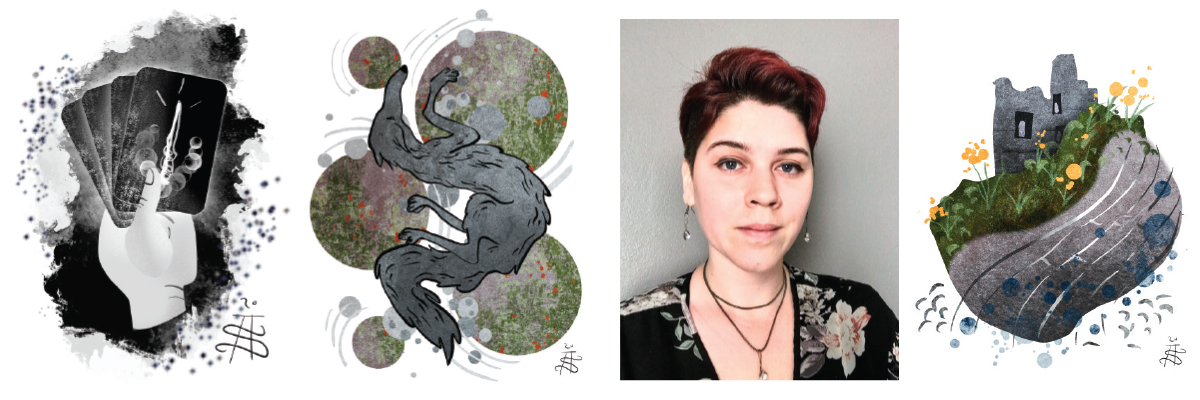
AUDE SHATTUCK | @audeshattuck on Instagram
From 3D design to 2D illustration, Aude Shattuck’s art explores “motifs of folklore and mythology through an everyday lens.” As a digital animation and game design student at Ferris University and a self-employed artist, Shattuck aims to combine the human touch found in traditional mediums with the technology of today. Her graceful, mystical approach to this process crosses creativity with compassion.
What are some standout moments during your journey as an artist?
When I started out, I was doing a lot more traditional media, doing things like watercolor and working with printmaking. As I started working more digitally, I really wanted to work on encompassing that and keeping that feeling in the art itself — so really just putting that human hand back into the digital format.
Could you speak to any underlying themes throughout your work?
I am very heavily influenced by mythology and folklore. I love that slight undercurrent of wonder, but also just a little bit of the sinister, that exists in that format. You have the stories of children wandering in the woods, and they often meet wicked or extraordinary creatures and beings there, but they still come home at the end of the day.
How have you navigated social media as an artist?
There’s this very big pressure, especially in people in their late teens and early 20s, that they need to have a certain kind of polish to their work or these really nice sketchbooks and finished pieces all the time. By posting significantly less on social media, taking some time to not post things as soon as you finish them, and finishing something and not being afraid to just let it stew for a little bit — it’s a little easier to view your art objectively, maybe with a little more fondness and forgiveness to yourself for what you were learning in that moment.
Do you have any advice for young artists?
Don’t be afraid to take a gap year. Don’t be afraid to take some time to explore and talk to people who work in different kinds of mediums. Some of the coolest people I’ve ever met aren’t just people who have gone straight to art school and found a way and a career path that way, but it’s people who work all kinds of different jobs and aren’t afraid to explore. You don’t directly have to make a career out of your art. It’s ok to find something that pays the bills and allows you to explore in your own way without doing art just for other people.
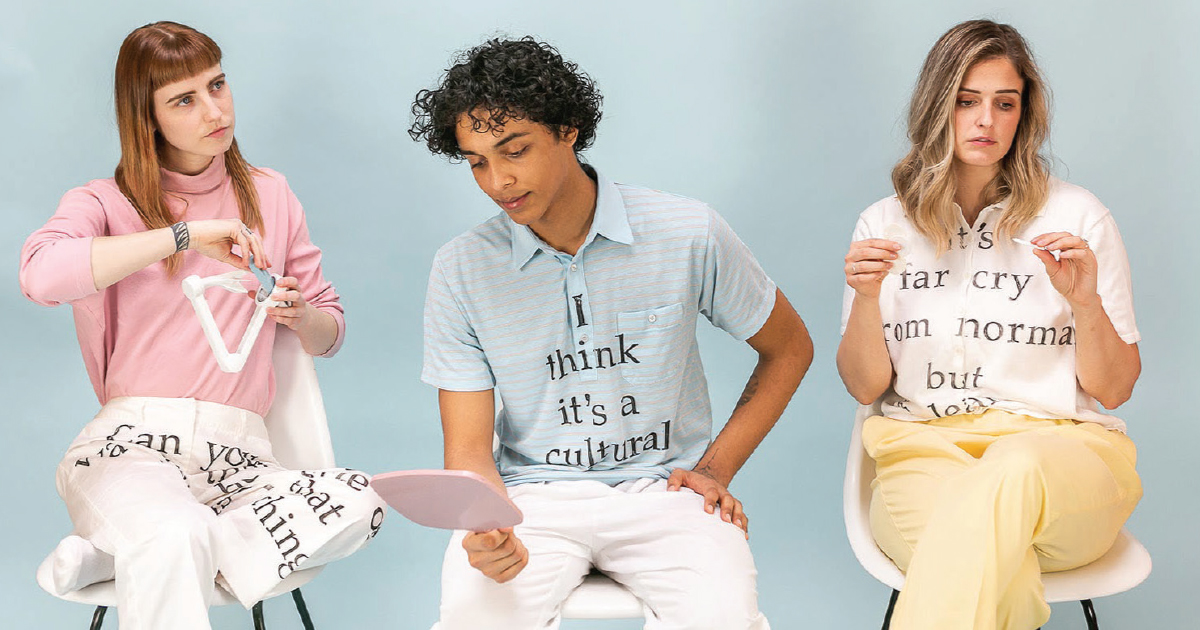
MEGAN ALTIERI | @sonder_articles on Instagram
For artist, author and art teacher Megan Altieri, her work is less about the medium than the concept. With her aesthetic preferences second to storytelling, Altieri uses her artwork as a vessel to showcase human nature. From empathy, to intricacy, to identity, Altieri wanders and wonders through the world with her eyes — and ears — wide open.
You list your artistic inspirations as identity, the peculiarity of human nature and the articulation of the psychological world. Tell us more about these.
I was never someone who was like, “Yeah, I just always knew I was an artist because I was obsessed with color and I was always doodling in the margins of my notebooks.” I was not like that at all. I think it all stemmed from that I knew I was gay from a very young age, and I also grew up in a very Christian household, so I wasn’t coming to terms with that. So from a very neutral standpoint, I was like, “Hmm, I must be strange. I’m dying to know what makes other people strange.”
Tell me about your project Sonder, which takes quotes from overheard conversations and prints them on clothing. Why did you choose fabrics and threads as the medium?
This idea of Sonder is this realization that everyone has a life as complex as our own life. The whole work is about empathy. These textiles, these fabrics — each of them was chosen specifically inspired by the speaker. I would collect an overhead conversation, and I would record what they were wearing, and I would go on a hunt to try and find something that captured their essence. So they stayed anonymous but honored the stranger, sort of like ghosts of these people.
You’ve recently turned Sonder into a book. Did you ever envision doing this? How did writing a book inform your creative process?
I had no intention of writing a book. Writing a book was terrifying. It was so hard: Looking at all the quotes, thinking about how to illustrate them, and then getting a photographer and directing those shots and preparing props for all those shots. The medium is second to the concept, always, for me. I feel like the medium is just a responsibility, which sounds really passionless, but my passion is always about the human experience.
You teach and create a lot of art. How do you balance creating and consuming?
I don’t think I have much of a balance. Because I’m not super attached to a medium, I think all of my art is inspired by sociological, psychological epiphanies or interests. As I’m teaching, as I’m working, as I’m creating, I’m thinking about those things. I guess my consumption doesn’t take much discipline. The way that I consume before I create is very natural. I guess it’s the creating that sometimes feels unnatural to me.
You won the ArtPrize Public Vote Installation Award in 2018. How does living in Grand Rapids inspire your art?
I’m originally from Ohio, so this West Michigan thing is new to me since college. My relationship with West Michigan as an artist started pre-ArtPrize, being involved in some collectives and doing some collaborations. But ArtPrize was really the transitional moment of really appreciating my community. I never saw myself as an ArtPrize artist, but when I started working on Sonder, I knew I needed that ArtPrize audience.
Sonder was about humanity. It was about everyone. I got the Installation public vote award, which made me feel like the community understood it. That the relationship wasn’t so much about the audience connecting with my art as it was about connecting with each other.
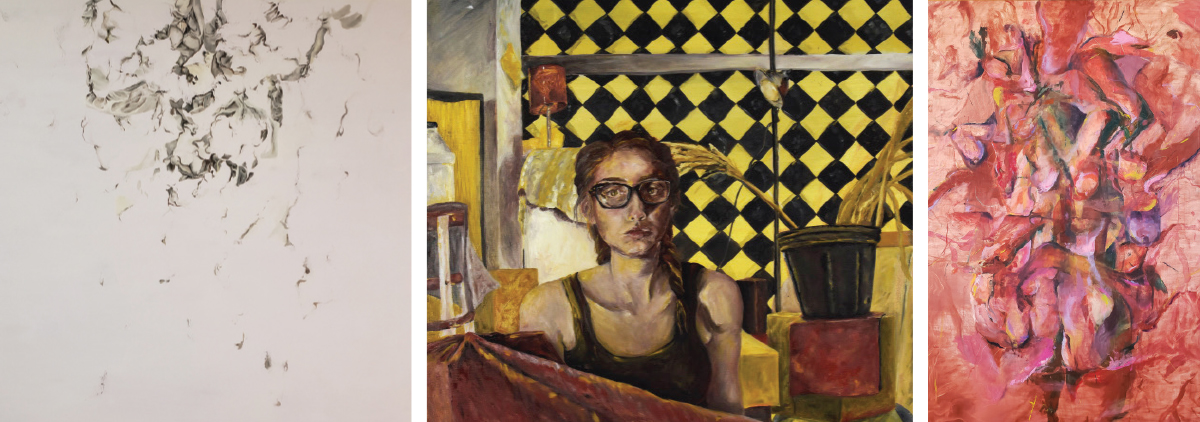
KATHRYN HENRY | @kathenryart on Instagram
In a world where art and academics seem at odds, Hope College senior Kathryn Henry has struck a balance. As a double major in studio art and psychology, she lets her art inspire her academics, and her academics inspire her art. From researching medieval manuscripts to studying race and the human mind, Henry’s artistic lens is people focused. She transforms what she learns from the classroom into creative material — which is an art in and of itself.
Tell us about the mediums you’re currently working in.
I work with mostly oil-based paints and watercolor. I’ve been dabbling a little bit with sculpture, but usually I base my sculptures off of my paintings.
For you, how have art and academics come together?
A lot of my art or studies have been very person-based. It isn’t just about the schooling, but I find that my art classes bring in a lot of different ideas. My art classes, for example, will talk about race or will talk about psychology. Implementing any kind of thing that you’re drawn to and bringing them together.
You recently worked on a research project under artist Caleb Kortokrax. What did you study and what was it like using art as research?
We got to do research on color and also on medieval manuscripts in the church. It was really interesting bringing that together, and the psychology behind it was also up my ally. Giving art meaning with the manuscript, and the history of the manuscripts that we were trying to implement with our art, was really interesting as well.
I think research-based art is really cool because you get to dig in with your mind. With art, I find I use the side of my brain I don’t actually think with when I work. But the research brings in a very important aspect of giving art meaning or purpose or direction.
How has moving to West Michigan influenced you creatively?
I don’t know if it’s necessarily the area or just my time of life that I’ve been in Holland, but I’ve definitely felt more independent, like my art is my own, since I’ve been in Holland. Maybe it’s because of all the opportunities and Grand Rapids being so close and my teachers being so supportive — they push you to have your own art and have it represent yourself. I feel like it’s just made me a lot more confident in my art.
What would you say to non-artists about art?
People ask me or tell me a lot that they can’t really do what I do. I definitely started that way, but I feel like with patience, you can definitely grow in any area you’re focused in. It doesn’t matter if it’s art or whatever, but I fully believe in that.
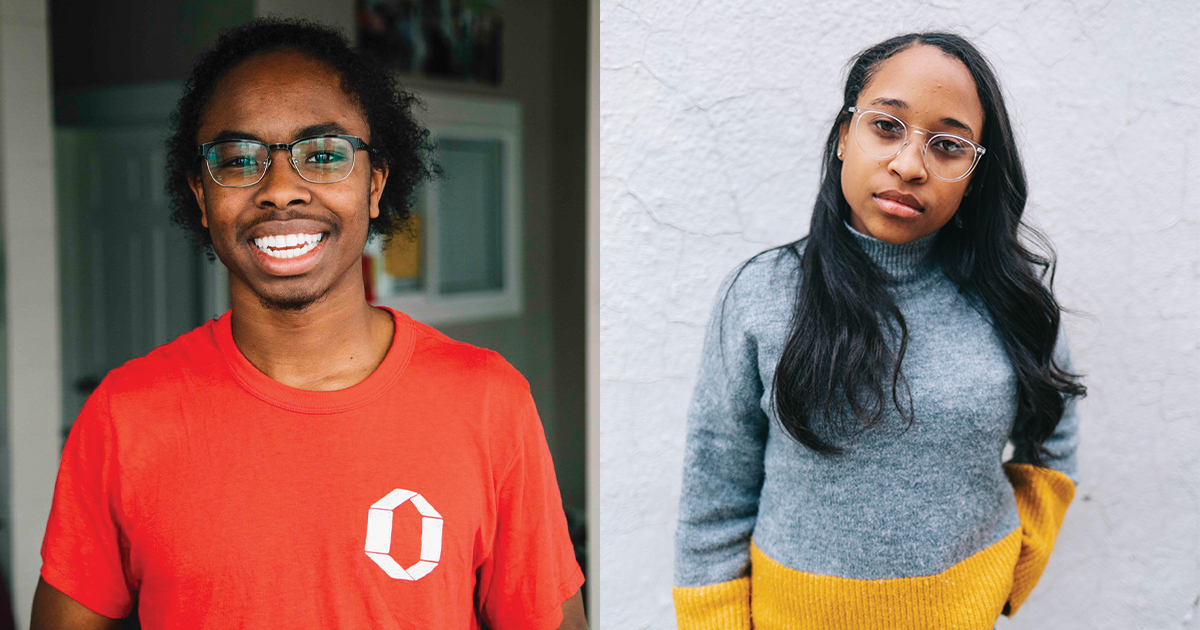
ERIK AND LAYAH | @eriklauchie / @layahlauchie on Instagram
If you don’t know Erik and Layah Lauchiè, it’s time to change that. Layah is a photographer at Carbon Stories and a blogger. Erik is the owner of Carbon Stories and is involved in PLUG (People Learning Understanding and Growing), Lope, and Lauchiè Design. This husband-and-wife powerhouse is on a mission to push themselves and the community as artists. Their most recent project, BeSavvyDoBetter, is a class co-taught by Erik and Layah to teach kids about content creation, photography, and artistry. Whether they’re working with brands, bands, or students, Erik and Layah’s creative philosophy can always be traced back to two words: Create daily.
Tell me about your creative relationship, as a couple.
Erik: Layah and I have a great balance. I’m able to have a greater focus on the technical side when it comes to capturing and creating and she does a great job at styling as well as making the thing we create look great. Of course, we both can do well creating from start to finish on our own, but for projects and opportunities that we get where we come together the skills just get magnified and we do even more.
Layah: Creating is at the core of who we are, amongst other things. It’s a part of our purpose.
What does “Create Daily” mean to both of you?
L: It means, for me, to create on purpose. Starting my day with a plan to create something intentionally every day to help tell a new story, express a feeling or just make the world and my environment go ‘round. It’s a phrase and concept that reminds me to walk in my purpose daily.
E: Create daily means for me to make something using my passion every day. Whether it’s a video, photo, or just building a relationship that creates opportunity, doing something on a daily basis helps me grow while at the same time giving me fulfillment.
I see you two are heading up a program called BeSavvyDoBetter. How did this come to life?
E: We both have had a passion for sharing what we have been able to learn in the field. We developed a 12-week program for the Boys & Girls Clubs of Kalamazoo that we are doing with a few other organizations. These programs are just a start to all that Savvy will be doing to share practical knowledge about the content creation field.
L: For me personally, Savvy fills that gap of having a creative outlet and exposing youth to a creative industry that I had no exposure to at such a young age. I had never touched a camera until my freshman year of college, through meeting Erik. Sometimes I think about how far I would be if I had my hands on a camera sooner, or even if I knew about the industry I work in a little more.
If you could give advice to another creative couple, what would it be?
L: I would probably say for you to find your mission and goals as a couple and always keep that in mind. When everything — good and bad — comes, that mission and goal will always be important because they will help remind you of your value. If that opportunity doesn’t align with your collective mission and goal, it may not be for you guys.
E: Have no ego. Keep the other person in the forefront of your mind as you go about creating. It may take time to find the best process and execute on it but as you push to keep creating together you will find a great solution and it will be so fulfilling. Also know that you will always run into disagreements creatively. It’s all about how they are handled and what growth opportunities can come from it.

MATT ELLIOTT | @matt_elliott_art on Instagram
When it comes to his art, painter and illustrator Matt Elliott muses over nostalgia, memories, and music. While breaking and making his own artistic rules, he found his visual voice through penciling in creative confines that allow him to shade outside the lines. Elliott graduated from Kendall College of Art and Design, where he studied photography. While his life as an artist hasn’t exactly looked like the doodles he dreamed up in the margins of his middle school notebooks, he celebrates each creative victory — big and small — with gratefulness.
Tell me about your artistic journey.
My artistic expression definitely was rooted in visual arts, though I did play in a bizarre synth rock band right out of college for a while. When I was in middle school, I really started drawing in the margins of my homework and then got excited about art overall into high school. I was like, “You know, I want to go to art school!” I wanted to be able to make it more of a job, so I actually ended up going for photography – but I realized throughout that process that photography wasn’t really for me. It was more structured than I like to be, so now as of late, I’ve been taking my art into painting and illustration where there are far less rules.
How did you find your visual niche?
Finding an artist’s visual voice, I feel like is one of the hardest hurdles you have to get over. For me, it’s something that I really did focus on, because I was looking at it like a branding. For the last few years, I gave myself kind of a rubric like, “OK, I’m going to only work in grayscale, and I’m going to use these harsh shadows on the left-hand side always, and I’m going to do shadows under the nose and the lips,” things that just were definitive. And then other than that, I can kind of go wild.
I see most of your art is in black and white. Tell me about your relationship with color.
I have a strong passion for color. A lot of the art that I buy and things I surround myself with are colorful things. But when I work in color, because I have done that in the past, I would kind of get lost. I was more concerned with how color is going to project or how color works together. So by stripping everything back and making it black and white, it again just freed me up a little bit. It might be an homage to my photography background, too, as I love black and white film.
Your website lists ‘90s-era cartoons, pop art and the sad songs of youth as inspirations. Can you dive into this a little more?
I think I’m someone that lives for nostalgia. I love living in the moment, but I also love the idea of making memories, and so I’ve always held really closely to my thoughts of when I was a kid or the music I listened to in high school. Those are some key elements of who I am, and my art filters through all of that to get the end result.
As a creative, what inspires you about West Michigan?
I think there’s a strong dichotomy of how I feel about West Michigan. There’s moments where I’m like this is the best place and it’s so wonderful and there are times where I feel boxed in. I like the polarity of West Michigan. You get the extremes.
What has surprised you most about being an artist?
It’s not like what you think it’s going to be like at all. It’s been the exact opposite, which has been very trying and challenging, but also really rewarding with small victories. Life kind of happens. I think that’s what was shocking to me at first, but now I’ve dug my heels into loving that. I just try and take every little day and be thankful for it.


